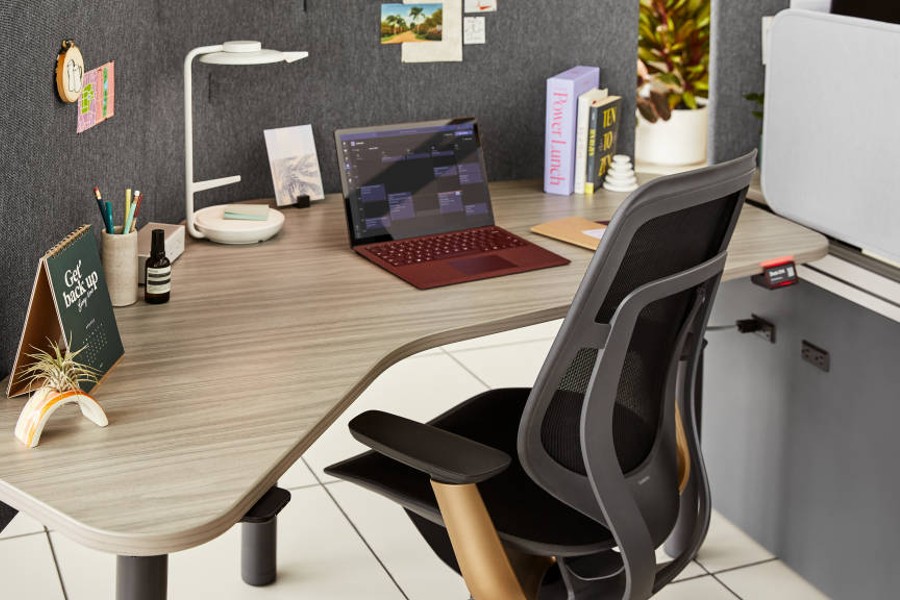
Office table design has significantly evolved over the years, transforming from basic functional pieces of furniture to sophisticated, ergonomic, and aesthetically pleasing workstations.
As work environments continue to evolve, the design of office tables has become integral to productivity, comfort, and overall office ambiance.
The modern office table is more than just a surface to place a computer or paperwork; it is a statement piece that combines functionality, ergonomics, and style. Manufacturers and designers have recognized the importance of creating versatile tables that cater to the diverse needs of today’s workforce.
Functionality lies at the core of office table design. Gone are the days of bulky, immobile desks. Contemporary designs emphasize flexibility and adaptability. Height-adjustable desks have gained popularity, allowing users to switch between sitting and standing positions, promoting better posture and reducing the adverse effects of prolonged sitting.
Moreover, the integration of technology has revolutionized office table design. Cable management solutions, built-in charging ports, and wireless charging capabilities have become standard features, ensuring a clutter-free workspace and easy access to power sources.
Ergonomics play a pivotal role in the design of office tables. Designers prioritize user comfort by incorporating ergonomic principles into their creations. Curved edges, adjustable components, and customizable features aim to reduce strain on the body, enhancing productivity and minimizing the risk of repetitive strain injuries.
Another aspect shaping office table design is sustainability. With an increased focus on environmental consciousness, manufacturers are using eco-friendly materials and adopting sustainable production practices. Recycled wood, reclaimed materials, and environmentally friendly finishes are becoming prevalent, catering to businesses and individuals seeking sustainable office furniture options.
Style and aesthetics have become equally significant in office table design. Today’s tables are not just utilitarian; they are visually appealing and contribute to the overall ambiance of the workspace. Sleek and minimalist designs are favored, complementing modern office interiors. Additionally, a variety of finishes, colors, and materials allow for customization, enabling tables to align with the company’s branding or personal preferences.
Collaboration and flexibility in the workplace have influenced the design of office tables as well. Modular and adaptable tables that can be easily reconfigured to accommodate different tasks and group sizes have gained popularity. These multifunctional tables facilitate teamwork, brainstorming sessions, and meetings, promoting a dynamic and collaborative work culture.
The pandemic has also influenced office table design trends. The shift towards remote work and hybrid office setups has led to the creation of hybrid tables that cater to both in-person and virtual collaboration. These tables integrate technology, providing seamless connectivity for remote participants while fostering a sense of inclusivity among on-site and remote team members.
Moreover, the concept of “hot-desking” has gained traction, prompting the design of shared tables and benching systems. These tables accommodate multiple users at different times, optimizing space utilization in flexible work environments.
In conclusion, office table design has evolved significantly, prioritizing functionality, ergonomics, sustainability, style, and adaptability. The emphasis on creating workspaces that enhance productivity, comfort, and aesthetics reflects the changing needs and preferences of modern workers and organizations. As technology continues to advance and workstyles evolve, the evolution of office table design is set to continue, embracing innovation and user-centric approaches to shape the future of workspaces.
- LISC CEO Michael T. Pugh Recognized Among 2024 Worthy 100 Leaders
- NY Lawmakers Celebrate Historic MENA Data Recognition Bill Signed By Hochul
- Sponsored Love: Leadership Skills Training Courses: Invest In Your Future Today
- Senator Hoylman-Sigal Calls On Independent Schools To Adopt NYC Public School Calendar
- Mayor Adams Celebrates 65 Million NYC Visitors In 2024, Second-Highest Ever
Become a Harlem Insider!
By submitting this form, you are consenting to receive marketing emails from: . You can revoke your consent to receive emails at any time by using the SafeUnsubscribe® link, found at the bottom of every email. Emails are serviced by Constant Contact









